Stephen Hawks Poetry Art and Anthroposophy
Westville Late 1980’s Chachalaca Review
Blackboards More Pages for Stephen Hawks
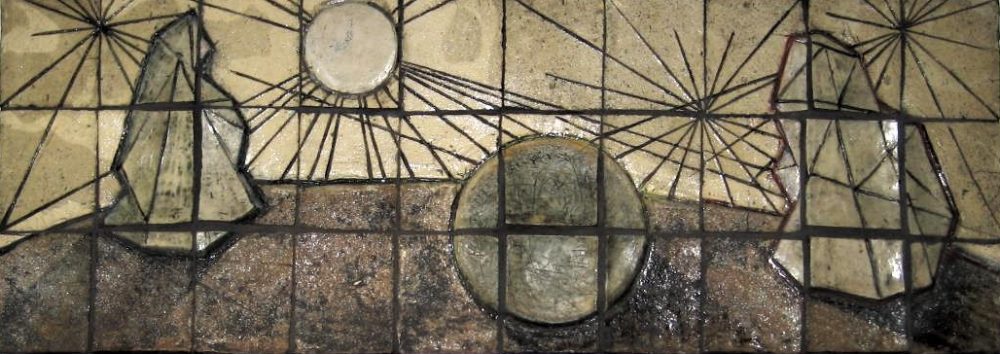
Alchemy Exhibition

New Instalation of : Elegy for An American Dream
American Idol and the Ineluctable evolution of the Cosmic Temple Form
Installation
2021-2023
The installation is somewhat based on a dream I had at least 2 decades ago. It is an altar and a hearth with a totemic work incorporating the 4 seraphic beings, beings which surround the throne of God, also historically referred to as the 4 evangels representing Mathew, Mark, Luke, and John, and at the human level, the 4 temperaments, choleric, melancholic, phlegmatic, and sanguine, as well as a coyote, an American trickster being, standing in for Anubis, a spirit guide. This is flanked by 2 candle holders with candles, referencing the 2 columns/candles in Masonic Temples, Jachin, and Boaz. They are entwined by 2 monsters as described in Revelation rising from the land and water, representing the temptations of mind and body, the physical and the sensual, Lucifer and Ahriman (The Persian name for Satan). Written on the altar are the words “That Good May Become”, a quote from Rudolf Steiner’s Foundation Stone Meditation. There is a braided rug made by my mother in front of the altar, that personalizes the piece and reiterates the idea of hearth and home. Behind the piece is a large chalk drawing on black paper of a minimalist representation of an American gothic country church floating in the stars with the tunnel of light from near death experiences above and to the right.
It is, like all altars, indicative of a gateway to the spirit world. It is called an Elegy because it is meant to evoke an experience of great loss (but also potential) in the face of great temptations placed before America at the threshold of consciousness, in the wake of any unifying spirituality or culture, whether Indigenous, European, or otherwise. There is also intended, an echo of the Great Awakening of the late 19th century within the work, to include the acknowledgement of Earth’s sacrifice and a renewed reverence and consecration towards Earth and Cosmos.
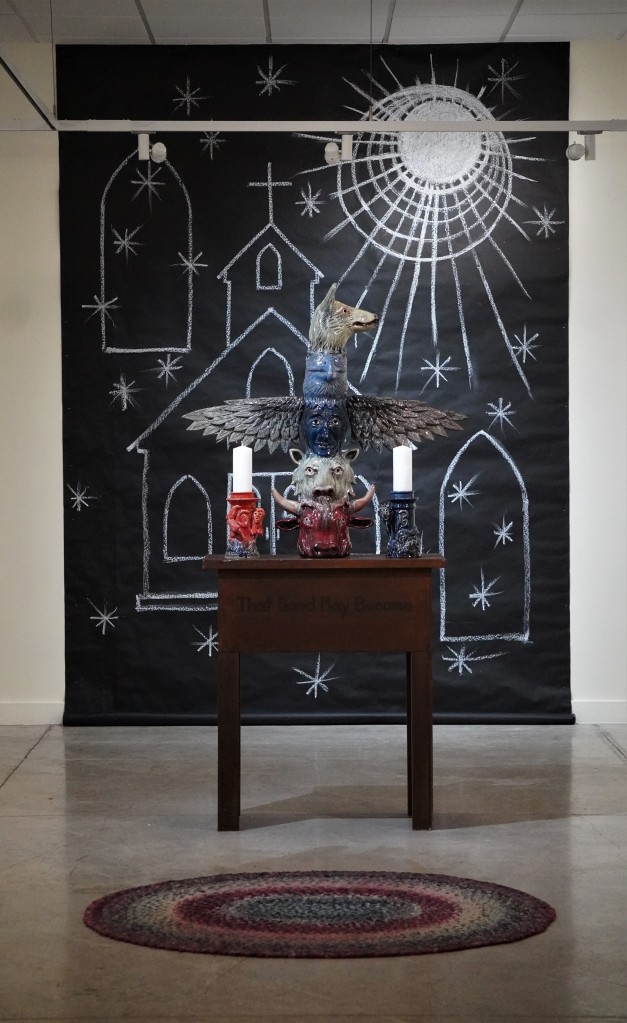
Elegy for An American Dream, Installation 2021-2023, Brownsville Museum of Fine Art:
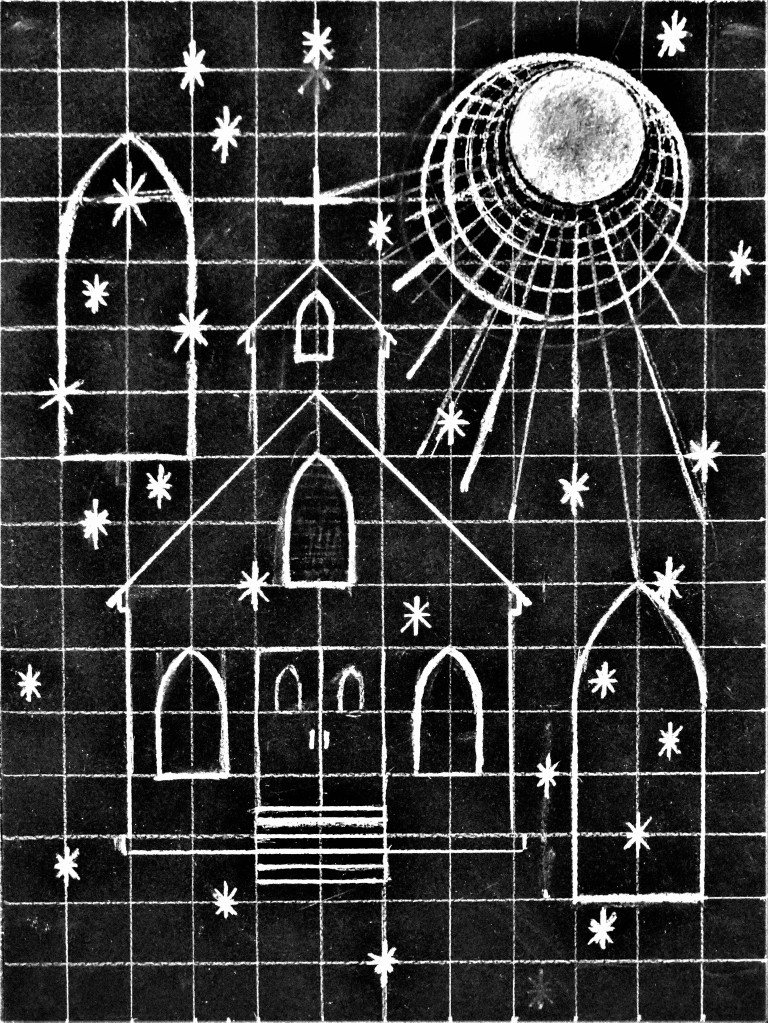
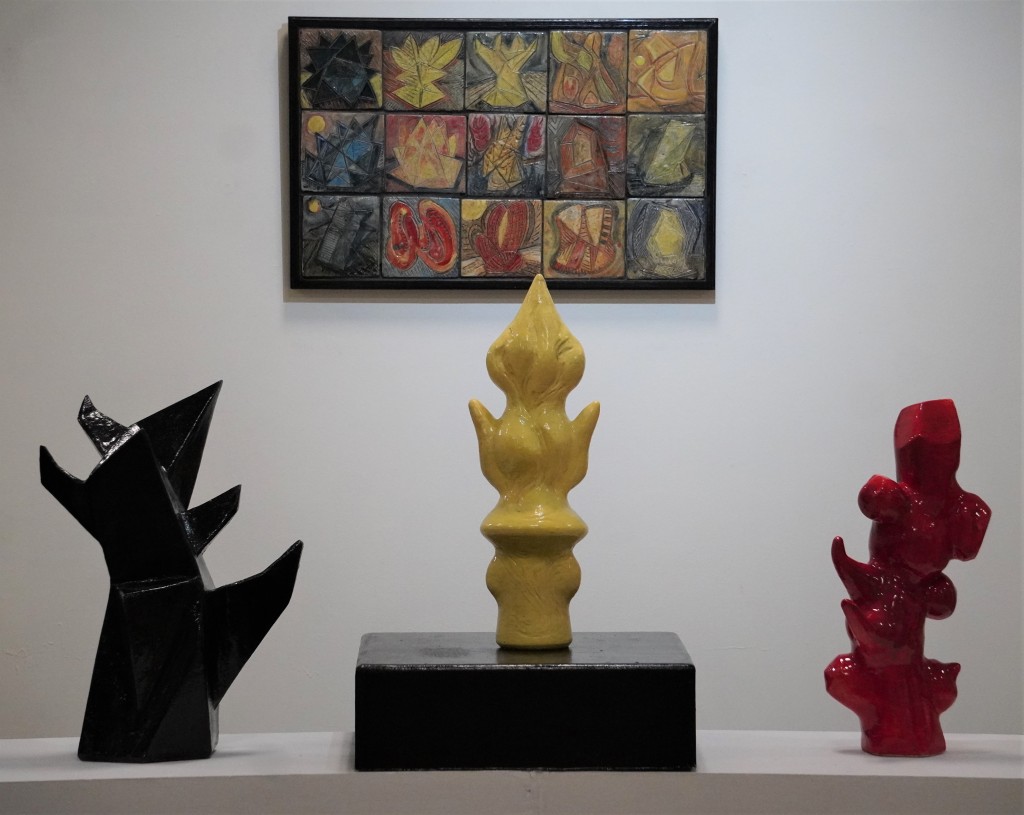
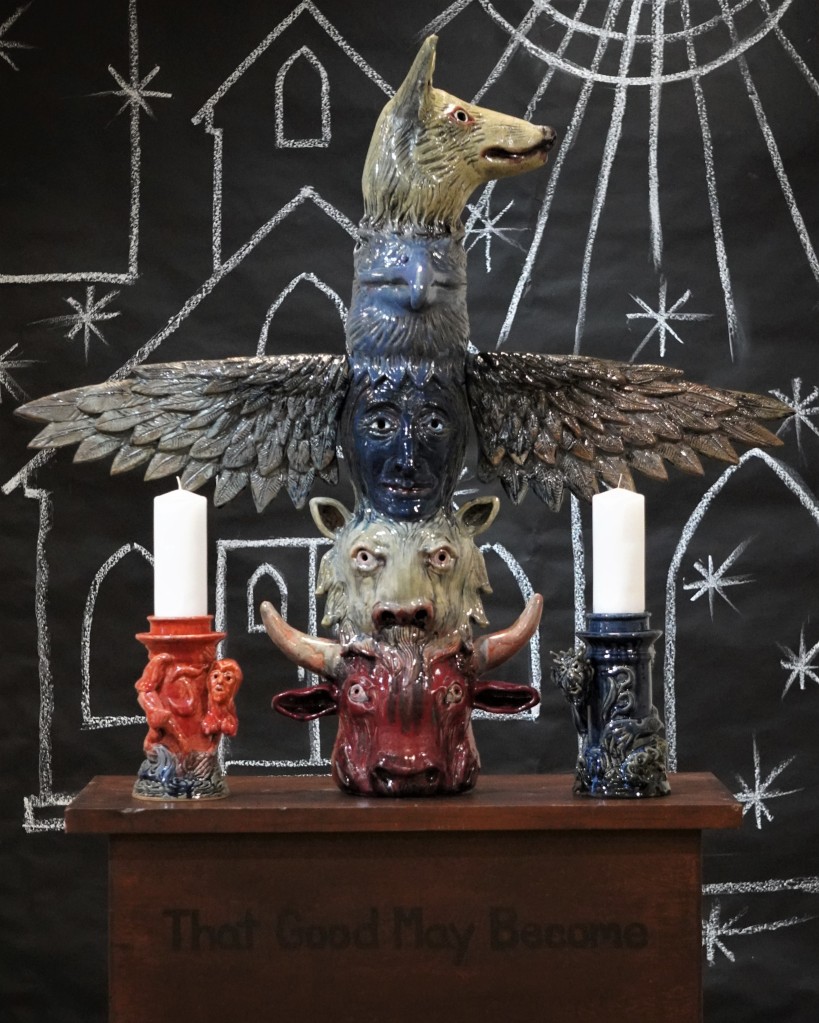
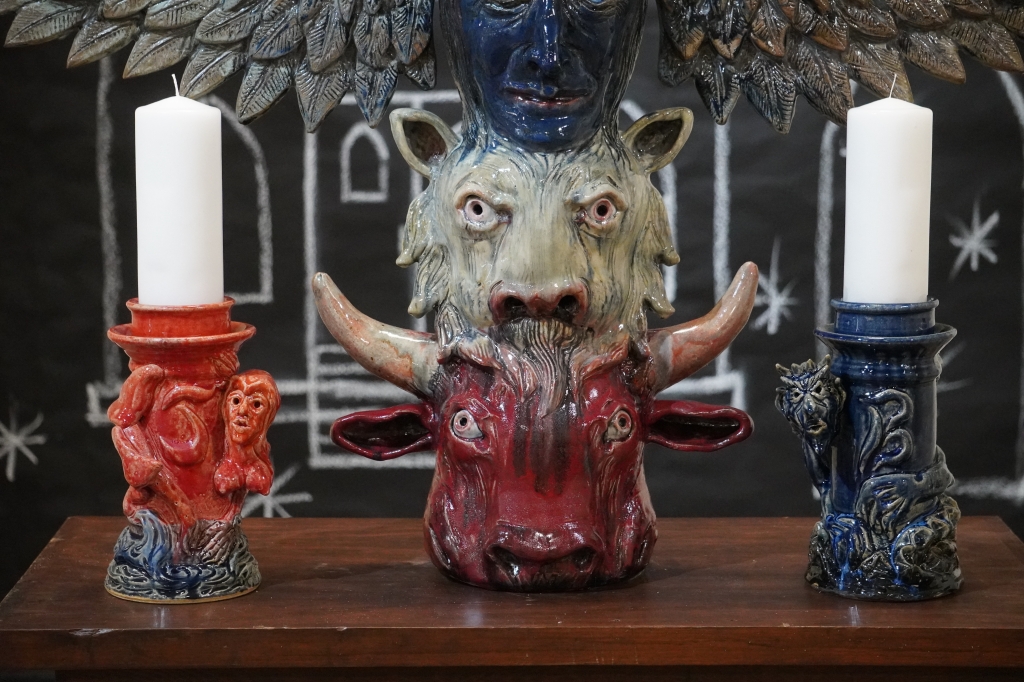
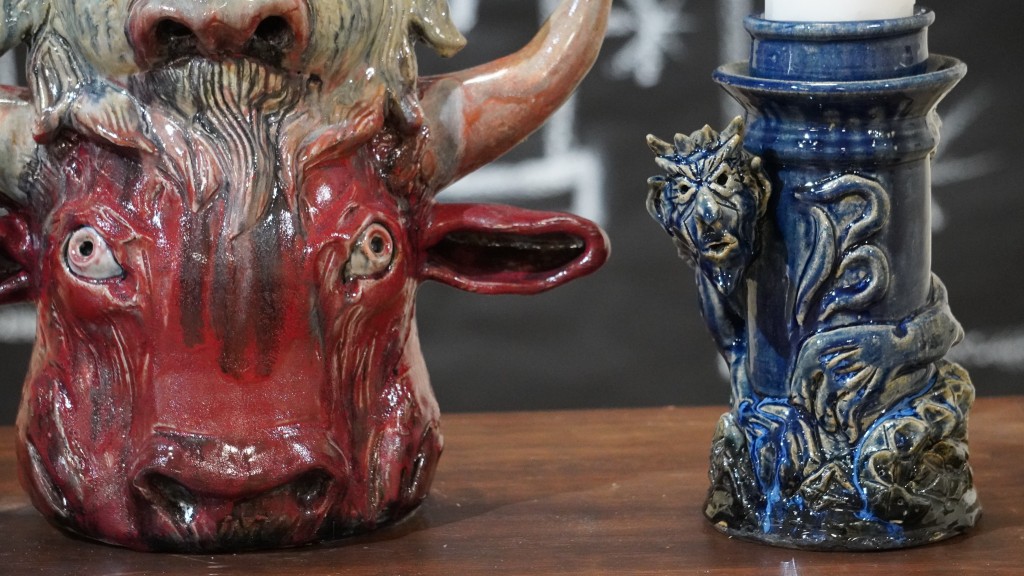
From the Exhibit, At the Threshold of Consciousness, 2023, BMFA
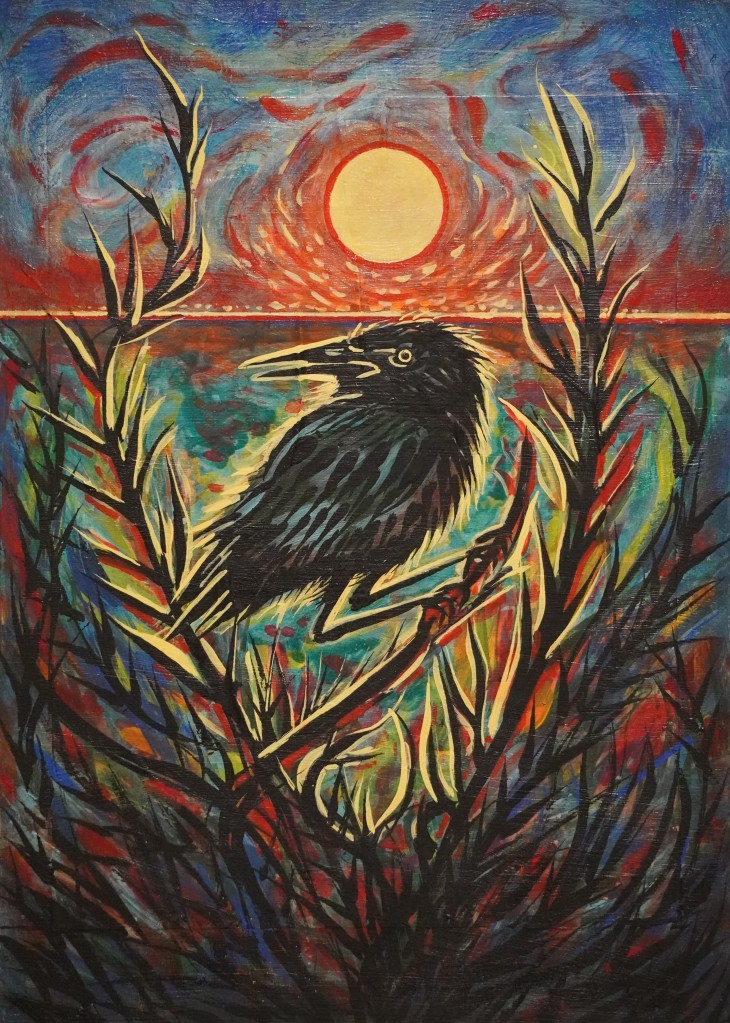
Green Heron, 2023
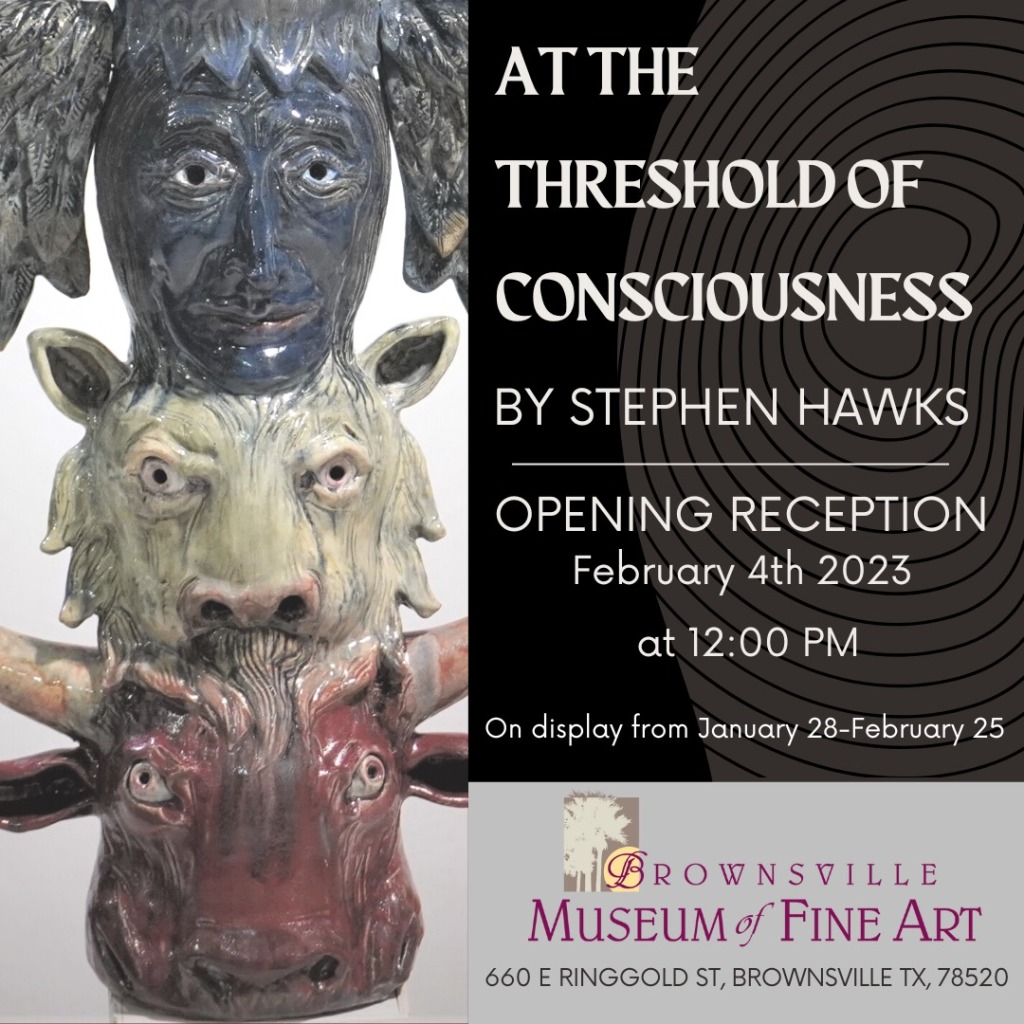
Artist Statement
One of the characteristics of my art practice, is eclecticism. My current ceramic works represent two or more directions. One, a longstanding investigation of form and color, another, more recent, the use of fired on printed laser jet decals. Both directions assume a type of visual, philosophical, and spiritual dialectic, one of form and color, the other of image, form, and text. They both constitute a type of visual language. which, over time has helped me to clarify certain fundamental laws manifested in nature and spirit. The decal works, allow me to expand my 2D practice of appropriating images, often my own, and using them like language in concert with form sculptures, my own poetry, and other text.
My sculptural work involves the relationship of color to form; the relationship of form to will, thought and feeling; and the paradoxical nature of ideal form vs form in relation to decay, metamorphosis, and becoming. All of this is further taken out of the abstract by my consciously relating form to anthropomorphic ascendancy and the nature of wounding and, consequential, transcendent healing processes. This brings me back to a more intimate relationship to materials, indicative of my expressive and conceptual intent.
I have been working with a threefold (will, thought, feeling) view of form and color for many years. However, since I am known more as a potter I have given the formative years of my career predominately to the development of specific processes and forms related to functional ceramic. I am still a practicing potter, grounded in the world traditions of utilitarian wares, with an art practice reflective of a life steeped in traditional, modernist, and contemporary, functional pottery.
Recently I have been doing a series of drawings using colored pencils. This is not new to my overall practice. Since childhood, I have done paintings, drawings, and collage right along with my 3D practice. These drawings contain both figurative elements, as well as non-objective and abstracted elements, the unifying theme being my relationship and use of color as an integrative spiritual experience. These drawings, done since August of 2020, I call my “Insomnia Drawings”, having mostly been done late at night when I have trouble sleeping. They are often improvisational and altogether have the characteristic of collaborative creation with unseen worlds, manifesting inner and outer consciousness. Some of these works are also finding their way into my ceramic practice with the decal prints, color also being a unifying force between 2D and 3D.
In addition, I have done some complex expressionistic totemic works that figure prominently in this exhibit. The idea for the Installation, Elegy for the American Dream, which is the last in a long series of totemic works incorporating the four Seraphim, has been with me for several decades. The Seraphim are also known as the four evangels at the level of human group souls, related to the four gospels in Christian iconography. The arrangement as a totem was suggested to me by a drawing of Rudolf Steiner.. I have often returned to the idea and was finally able to dedicate time to creating this work, the kernel of which came to me in a dream. I have pondered over it ever since and drawn images of it for years, trying to piece together its meaning(s). The current amalgamation is a composite, partly from the dream and partly from my interpretations.




Description of Instalation:
Elegy for An American Dream, Installation 2021-2023:
The installation is somewhat based on a dream I had at least 2 decades ago. It is an altar and a hearth with a totemic work incorporating the 4 seraphic beings as well as a coyote, an American trickster being, standing in for Anubis, a spirit guide. This is flanked by 2 candle holders with candles, referencing the 2 candles in Masonic Temples, Jachin and Boaz, They are entwined by 2 monsters as described in Revelation rising up from the land and water, representing the temptations of mind and body, the physical and the sensual, Lucifer and Ahriman (The Persian name for Satan). Written on the altar are the words “That Good May Become”, a quote from Rudolf Steiner’s Foundation Stone Meditation. There is a braided rug made by my mother in front of the altar, that personalizes the piece and reiterates the idea of hearth and home. Behind the piece is a large chalk drawing on black paper of a minimalist representation of an American gothic country church floating in the stars with the tunnel of light from near death experiences above and to the right. Beside this are 4 ceramic platters, 2 on either side, with images of the seraphic beings again, also historically referred to as the 4 evangels representing Mathew, Mark, Luke, and John.
It is, as all altars, indicative of a gateway to the spirit world. It is called an Elegy because it is meant to evoke an experience of great loss (but also potential) in the face of great temptations placed before America at the threshold of consciousness, in the wake of any unifying spirituality or culture, whether Indigenous,European, or otherwise. There is also intended, an echo of the Great Revival of the late 19th century within the work.
BIOGRAPHY:
Stephen Hawks, MFA
Lecturer III UTRGV, School of Art and Design
Stephen Hawks, born in Washington D. C., has lived most of his life in Georgia. He has training in art, music, and theater, an AA in theater from South Georgia College, a BFA from Valdosta State University, and an Interdisciplinary MFA, with a concentration in ceramics from Florida State University with additional coarse work in art education from Columbus State University. He was Resident Potter at Westville living history museum for 19 years and an independent artist for over 35 years. He is married with two grown Daughters. He came to Brownsville Texas in the fall of 2012 to teach at UTB, courses in Ceramics, Graduate Art Ed, Art History, 3D Design, and Art Appreciation. Currently, he oversees the Ceramics Program and teaches Ceramics and Foundations in the School of Art and Design at The University of Texas Rio Grande Valley on the Brownsville Campus. Stephen Hawks is also a poet and musician. He invites collaboration across disciplines and supports this in his art and educational practice.
At one time or another, my parents , my sisters, and I, all made baskets to sell. These are some of mine from the late 1980’s, made in Elrito New Mexico and Gathersburg MD. I gathered materials from the woods in both places. Some have comercial cane reed with yarn accents, but some are entirely of foraged materials. I used yucca, willow fronds and bark, scrub oak, grape vines, bones, antlers, and drifrt wood from the arroyos.
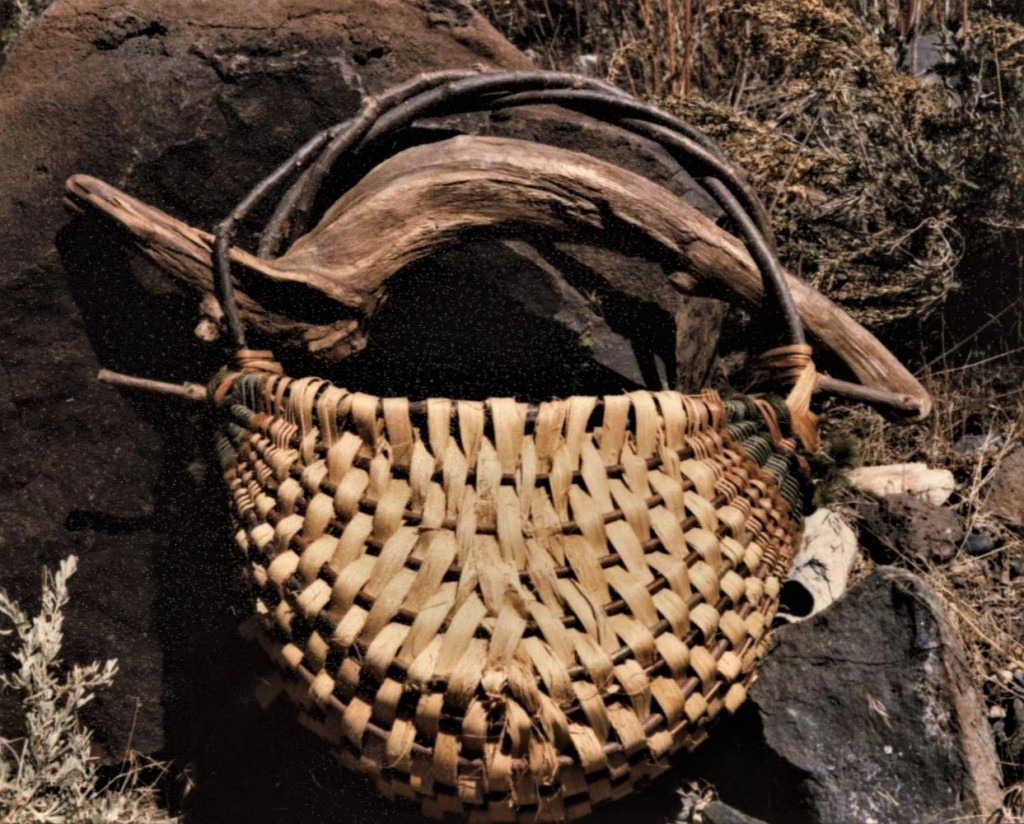

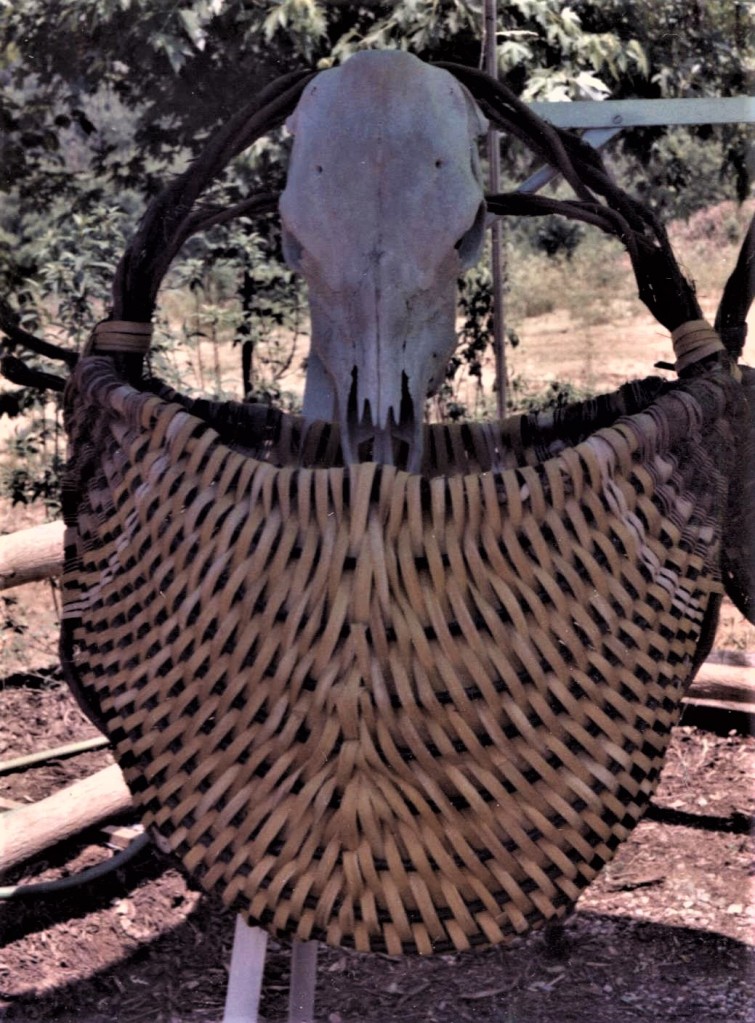
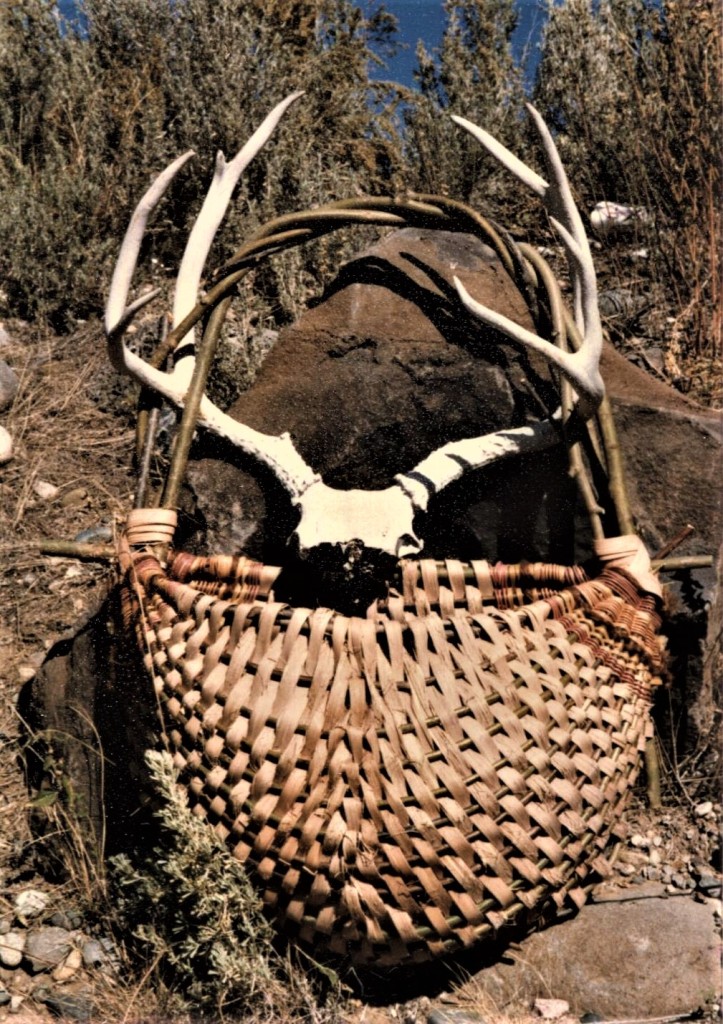

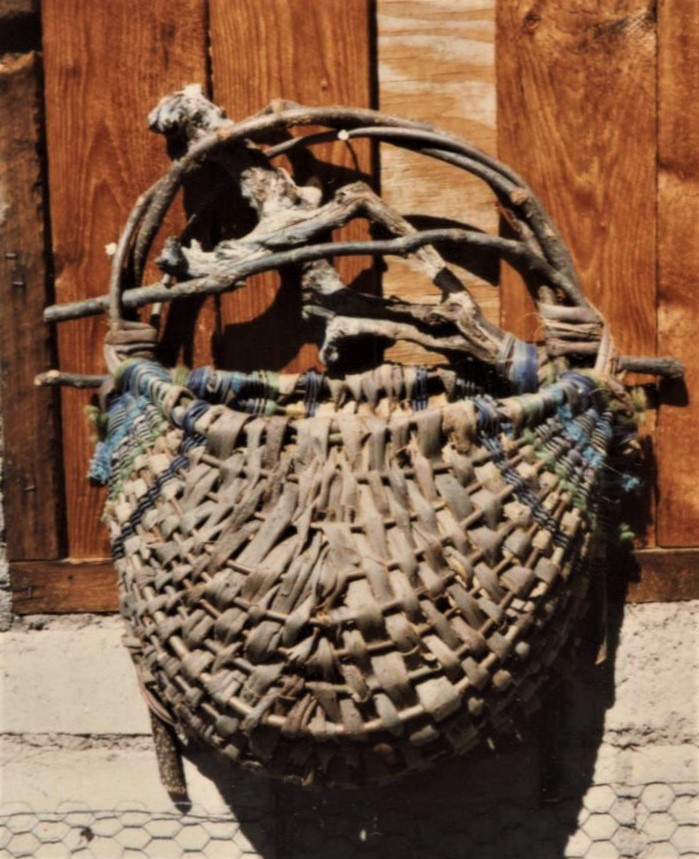
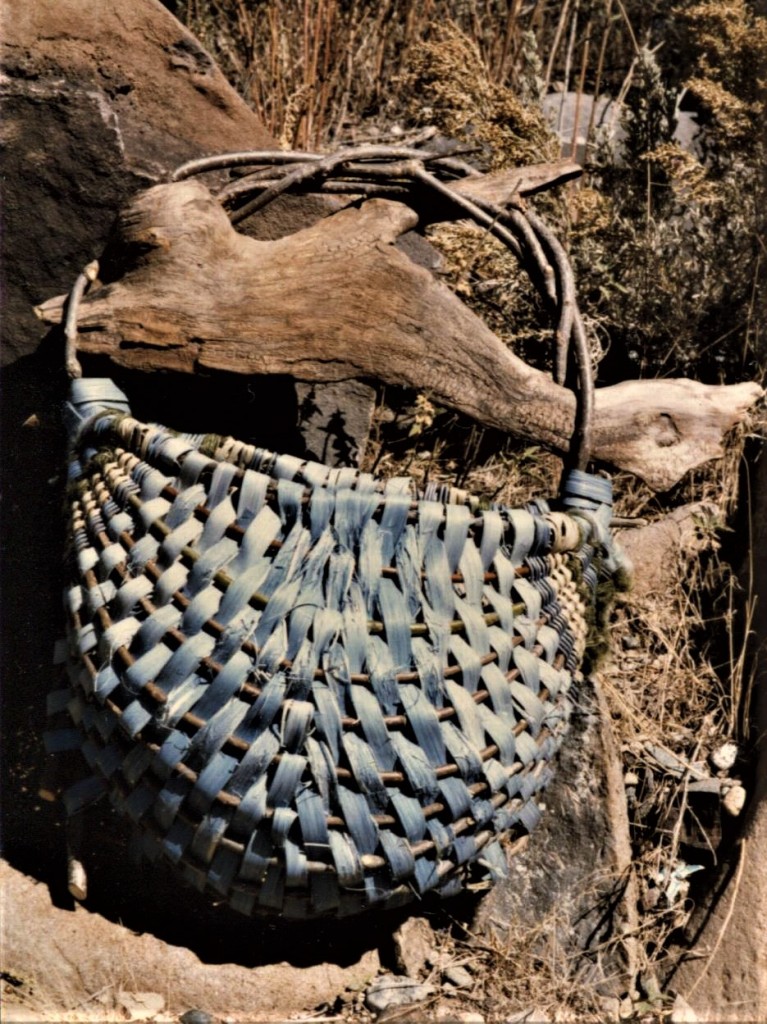
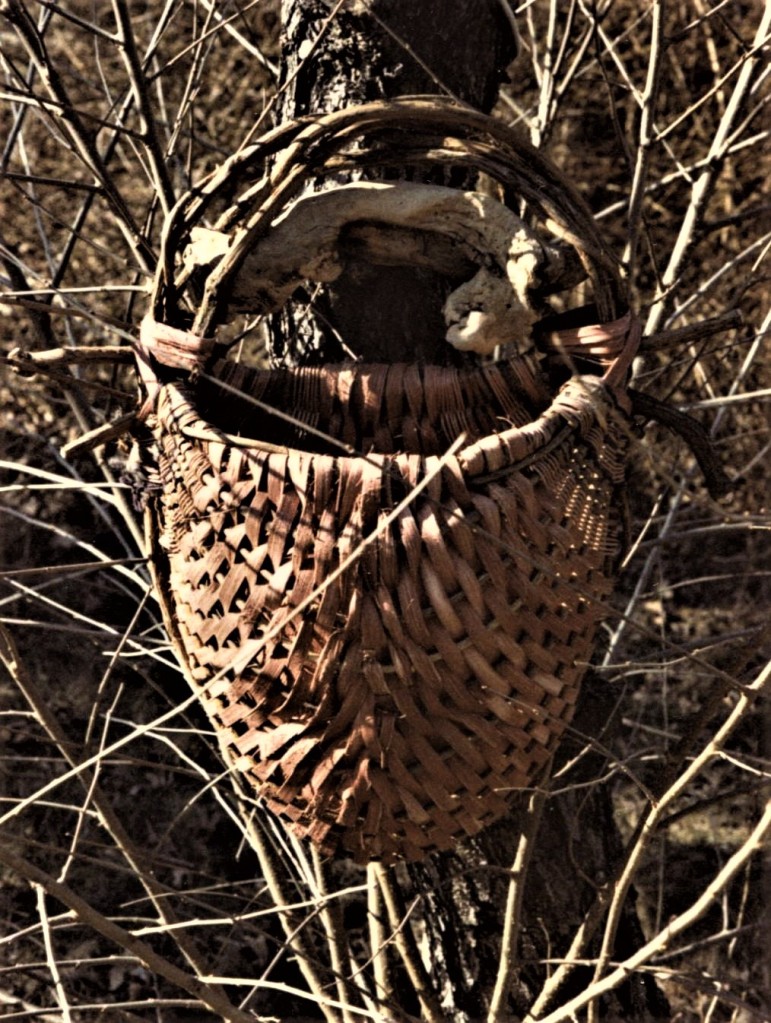
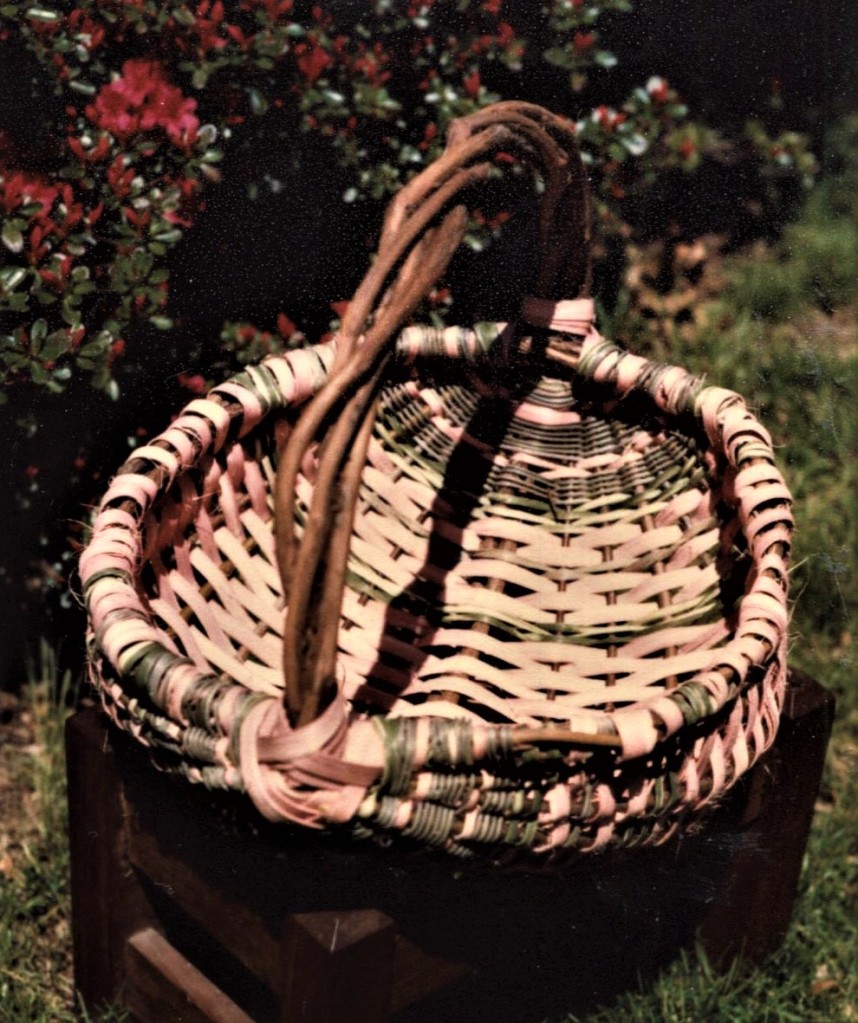
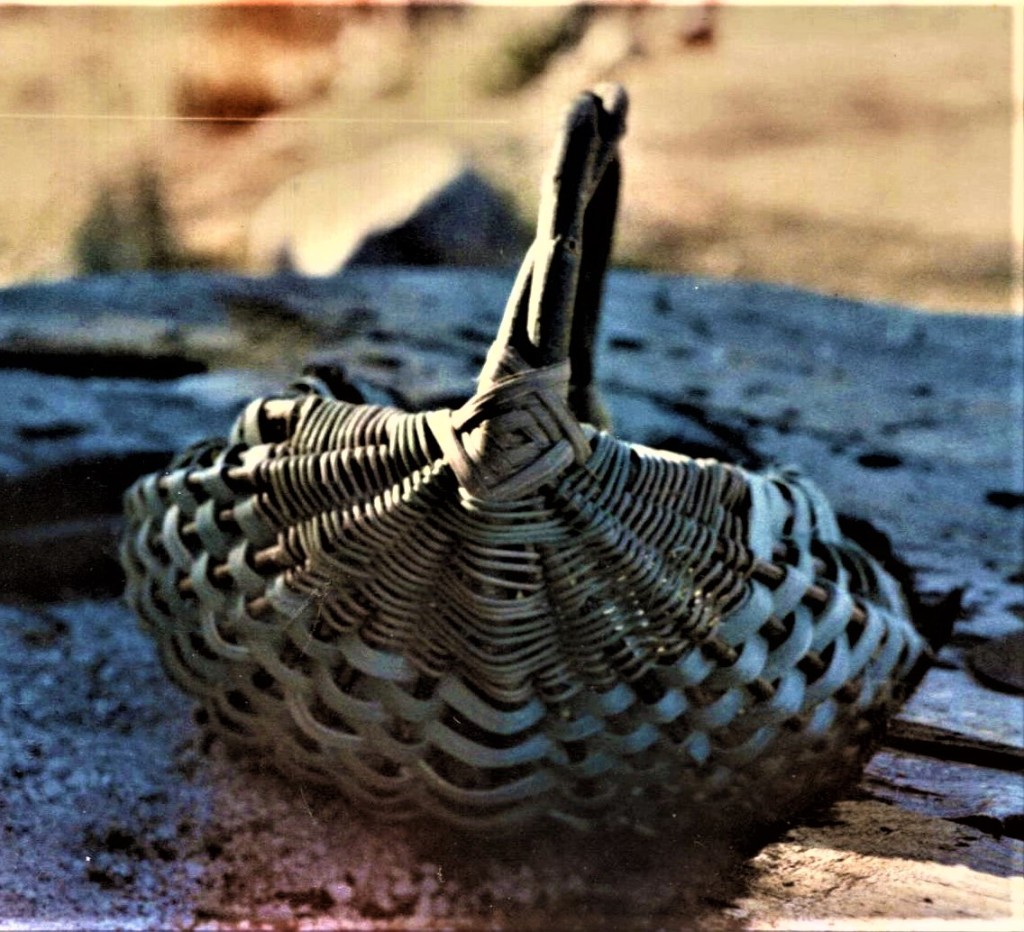
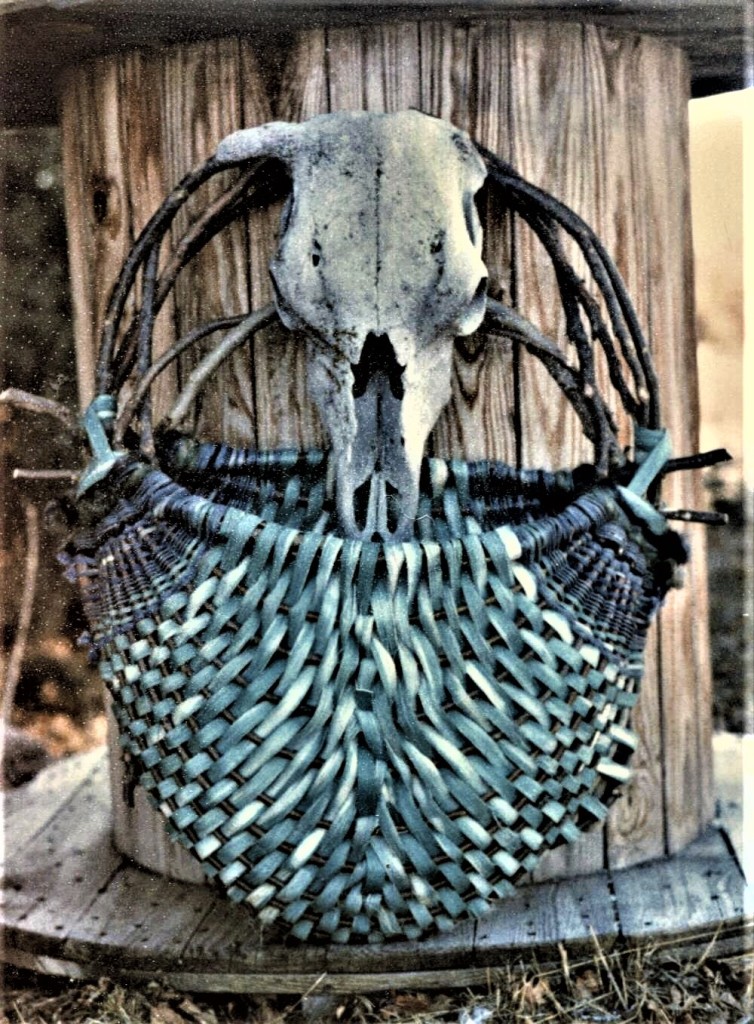
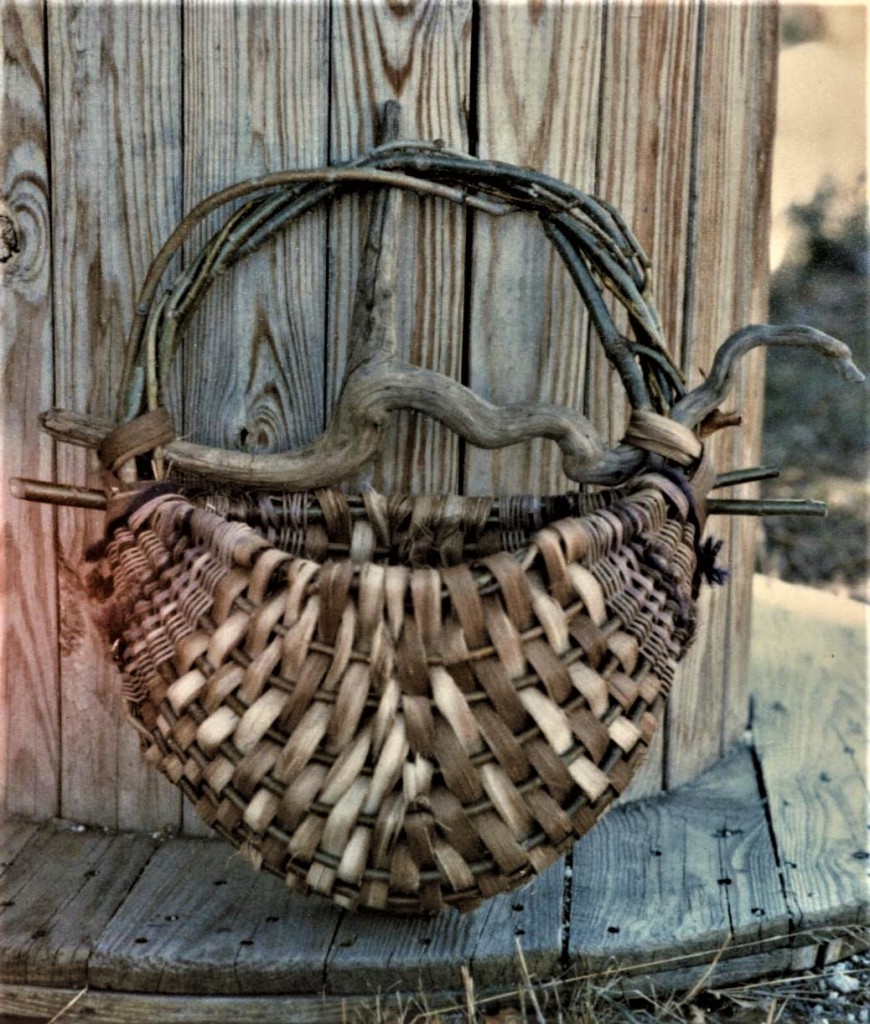
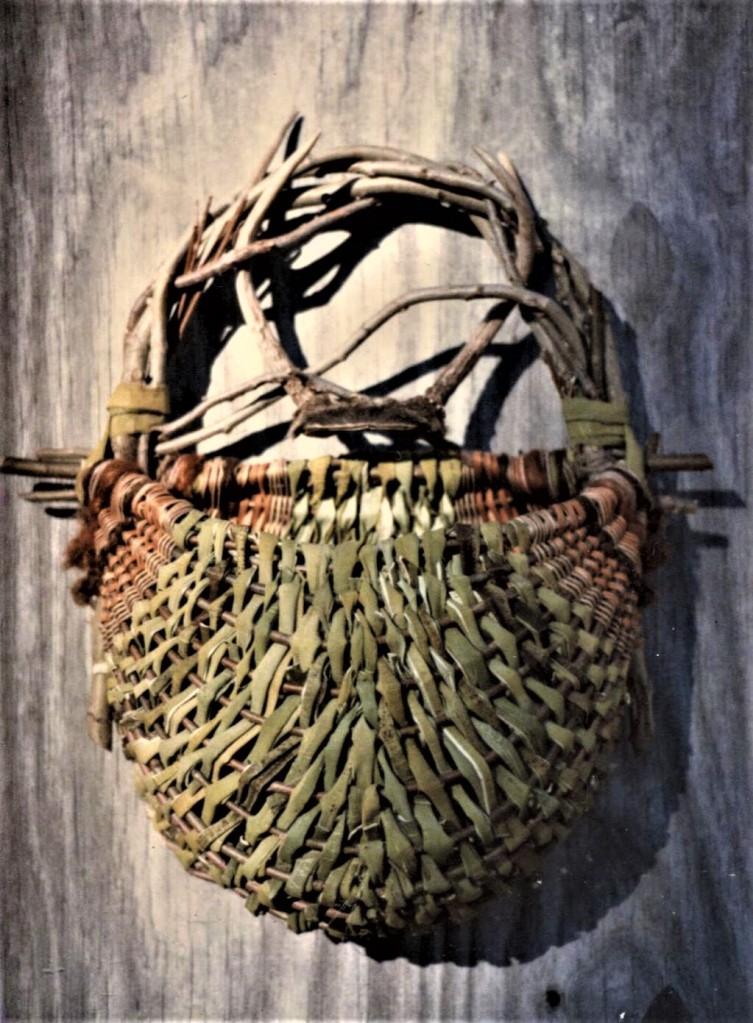
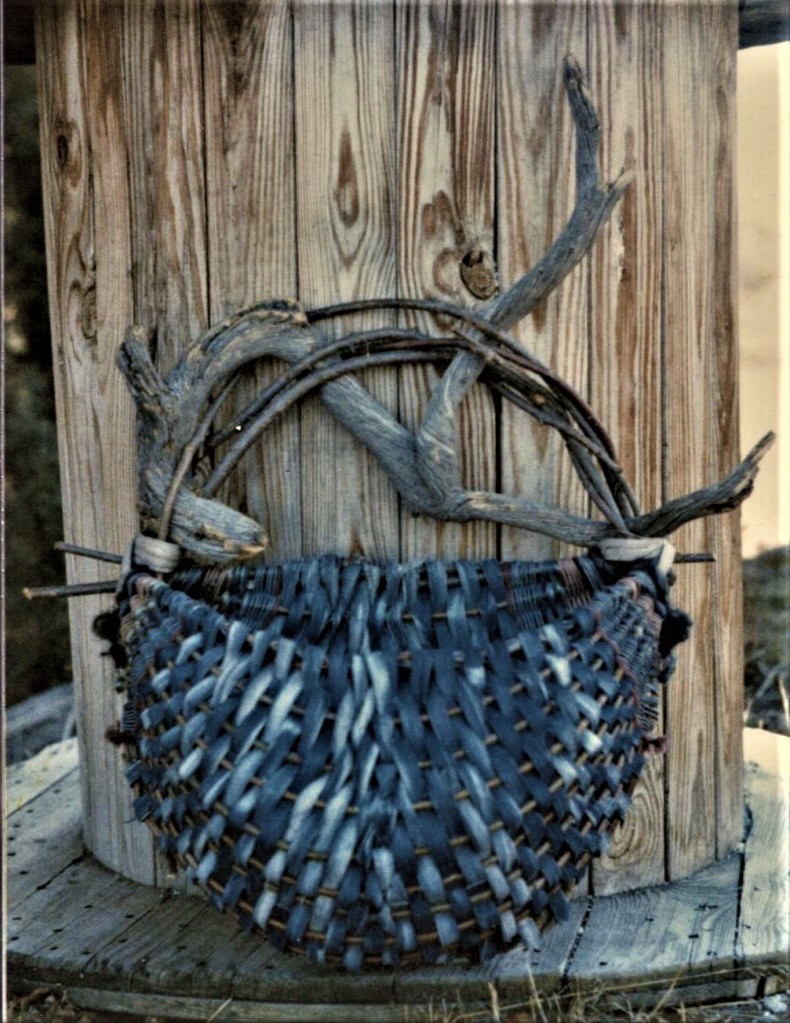

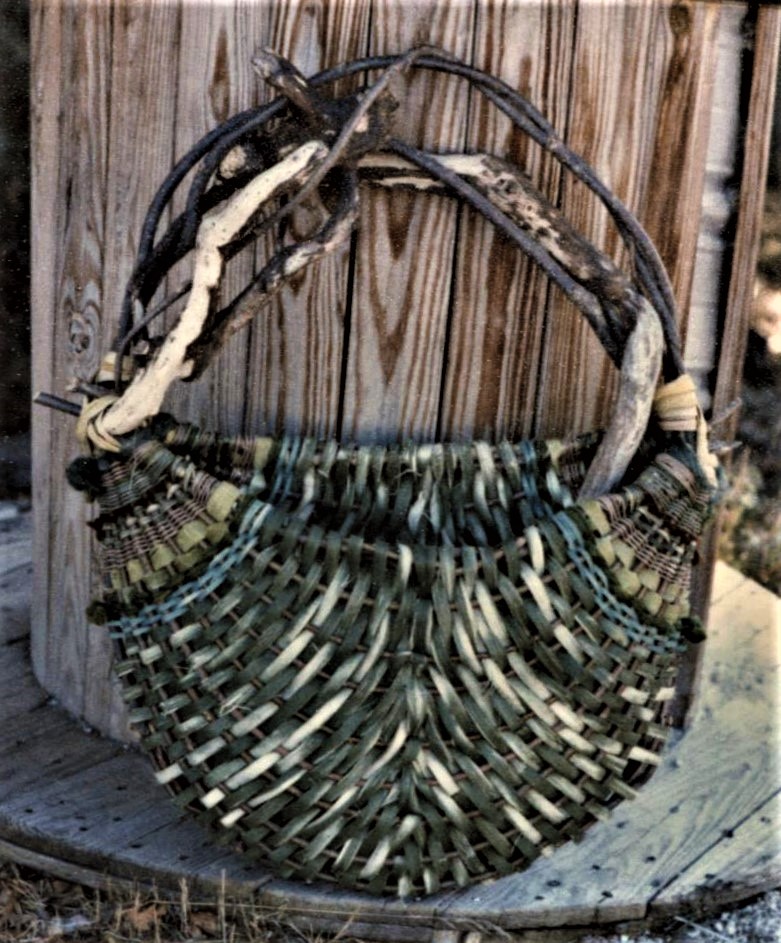
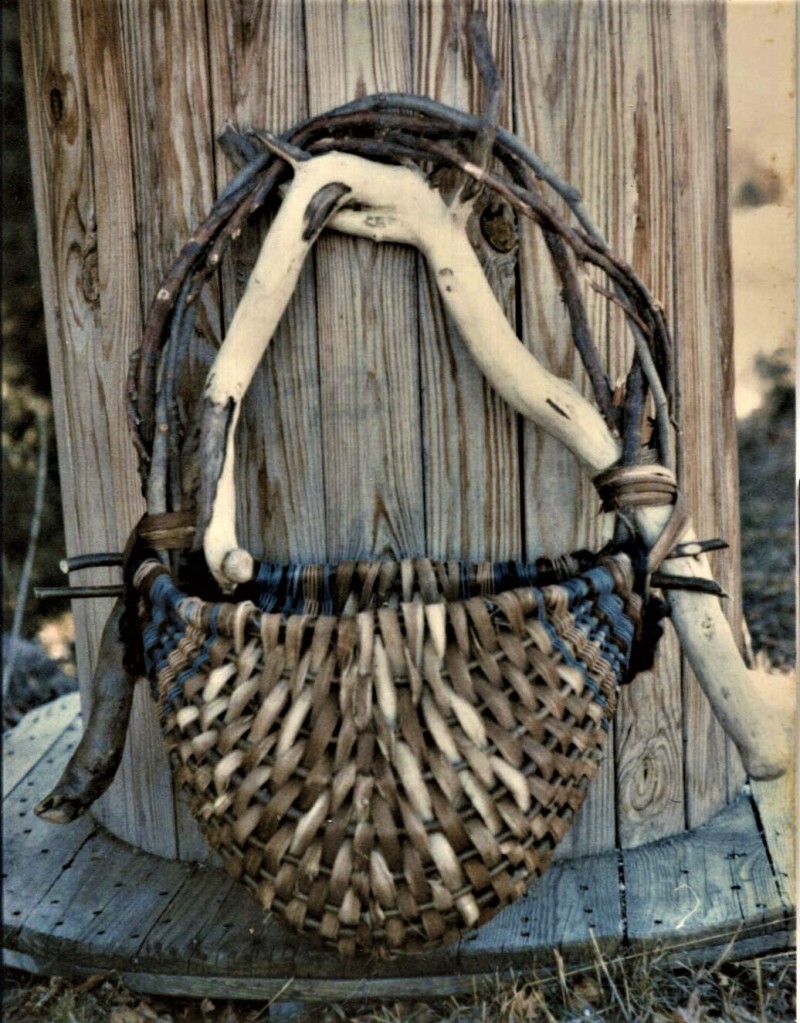
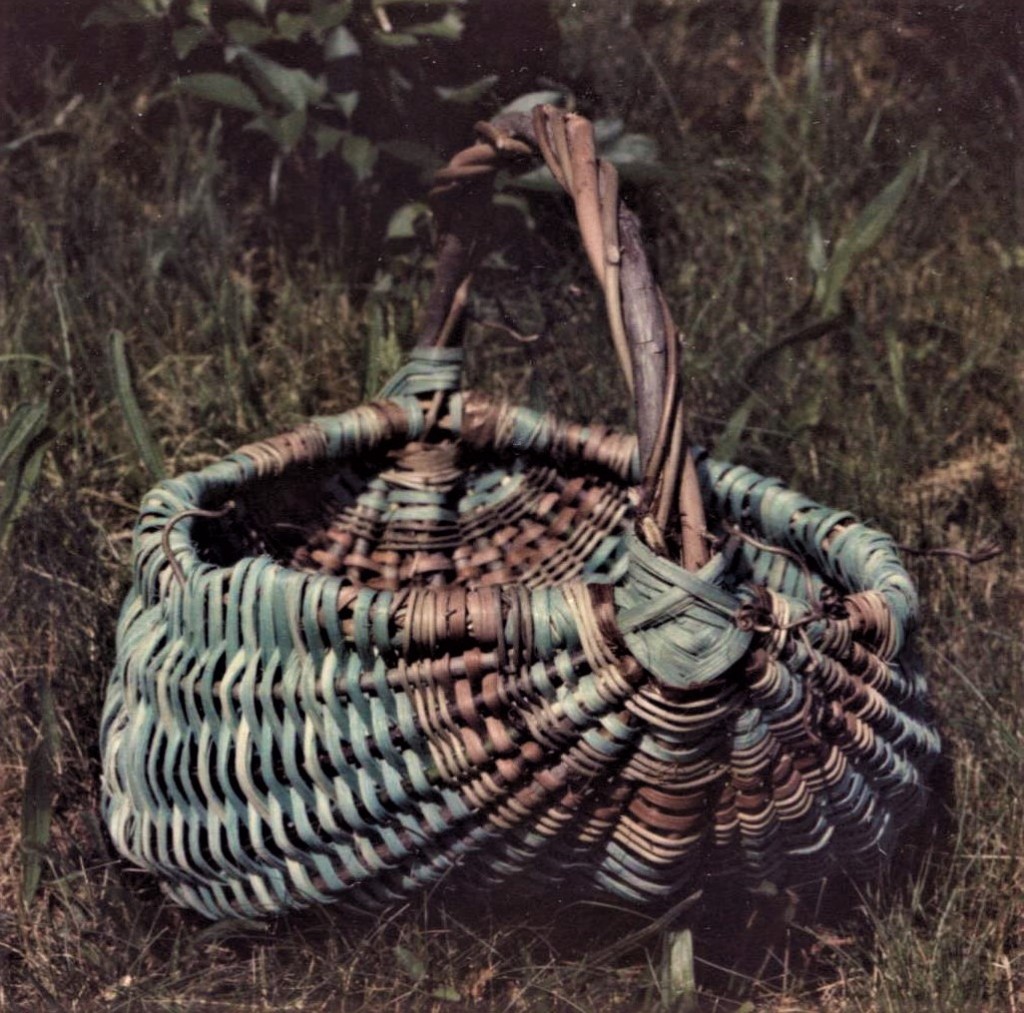
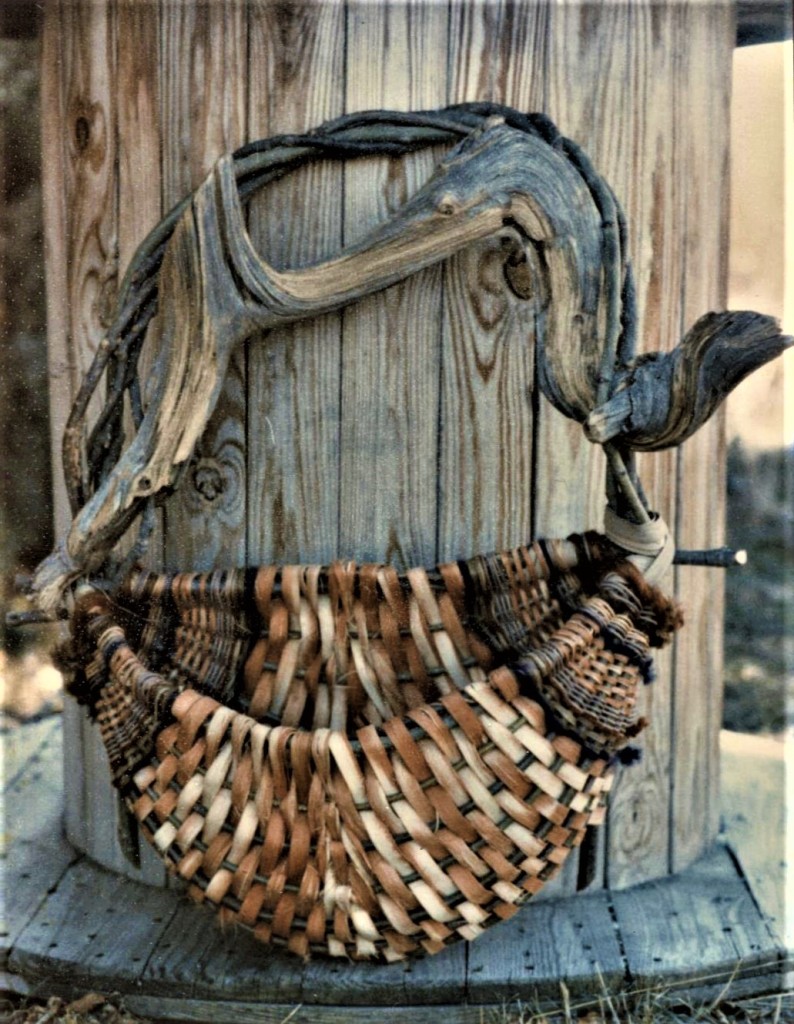
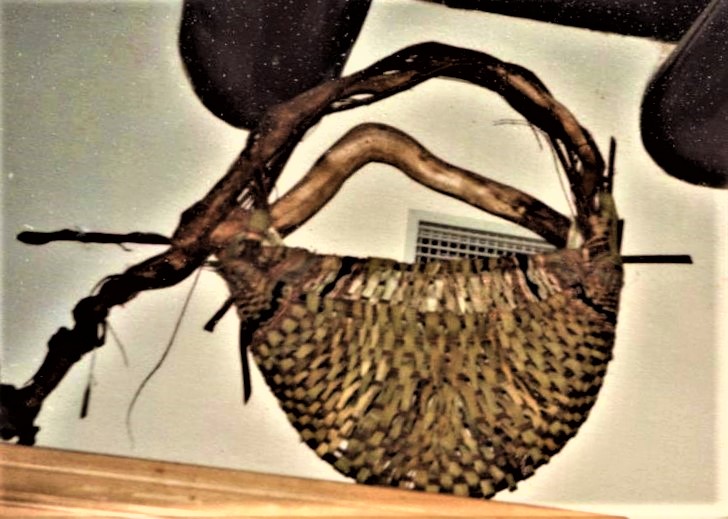
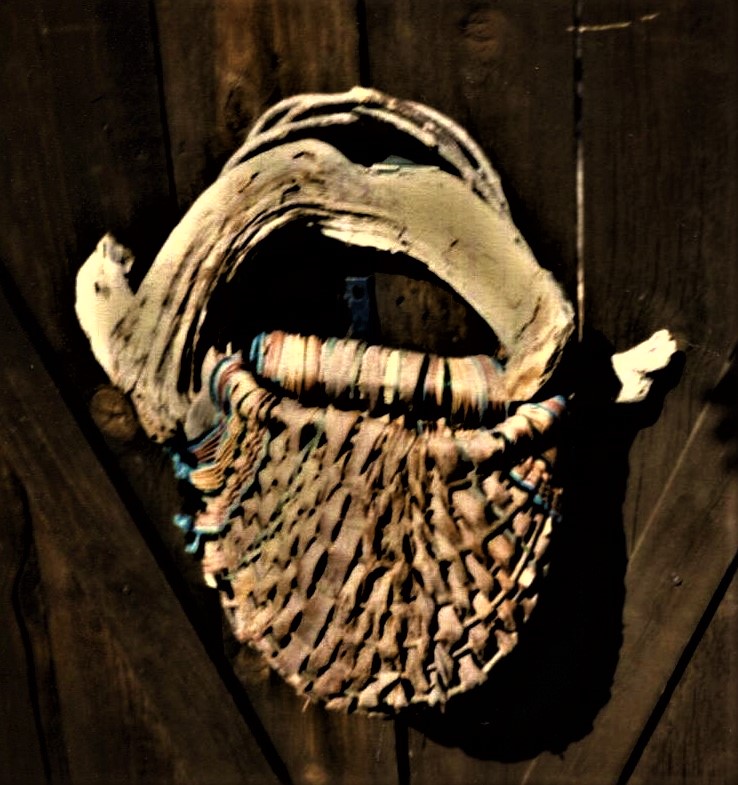
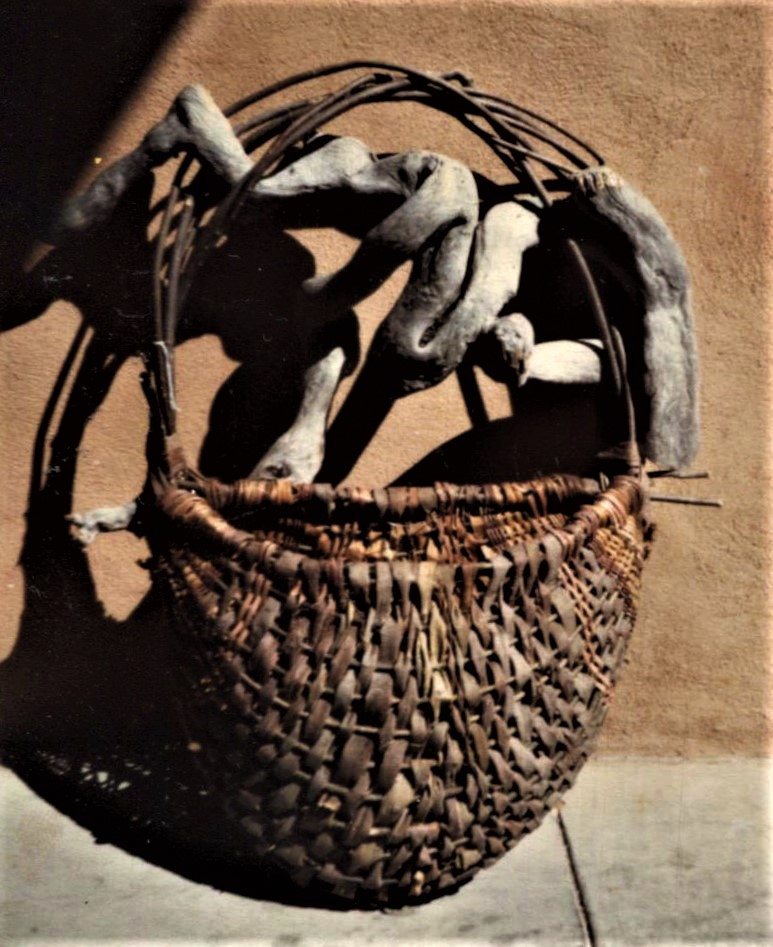

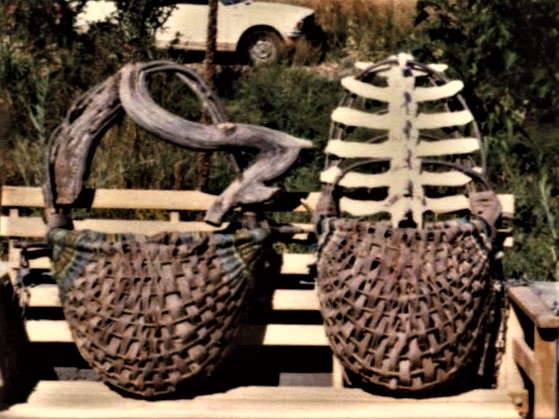
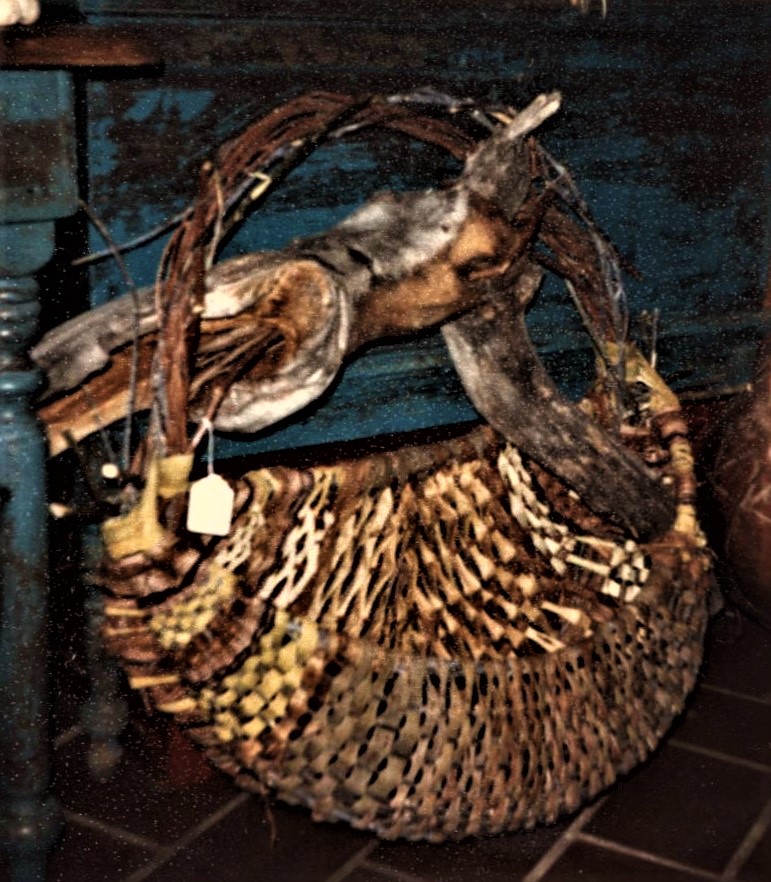
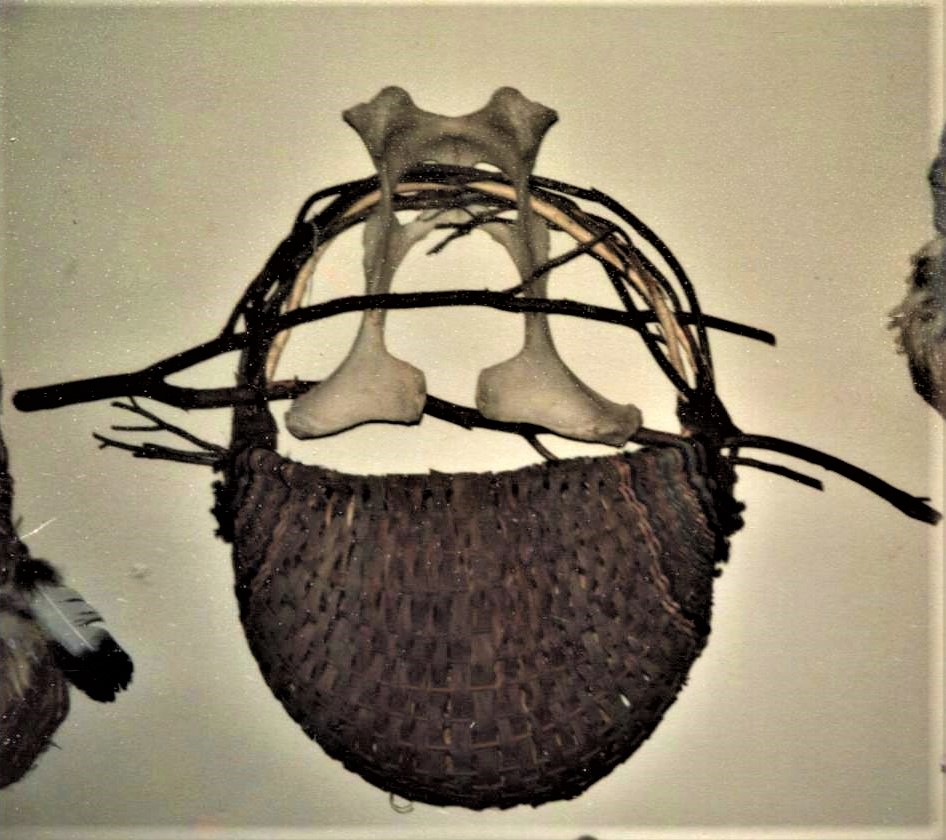

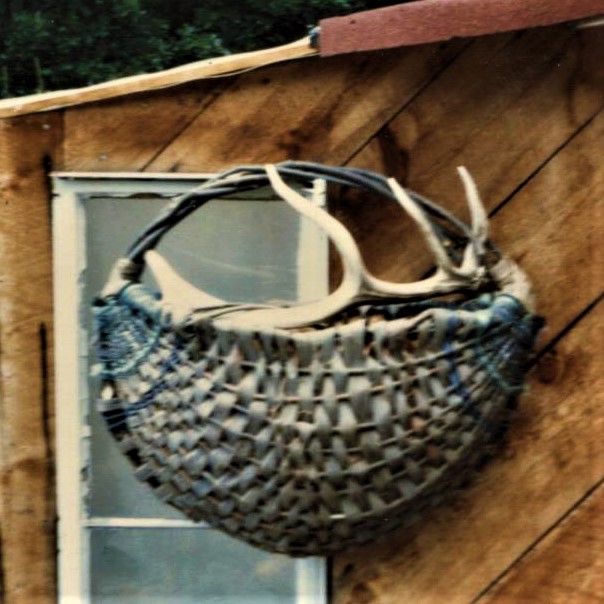
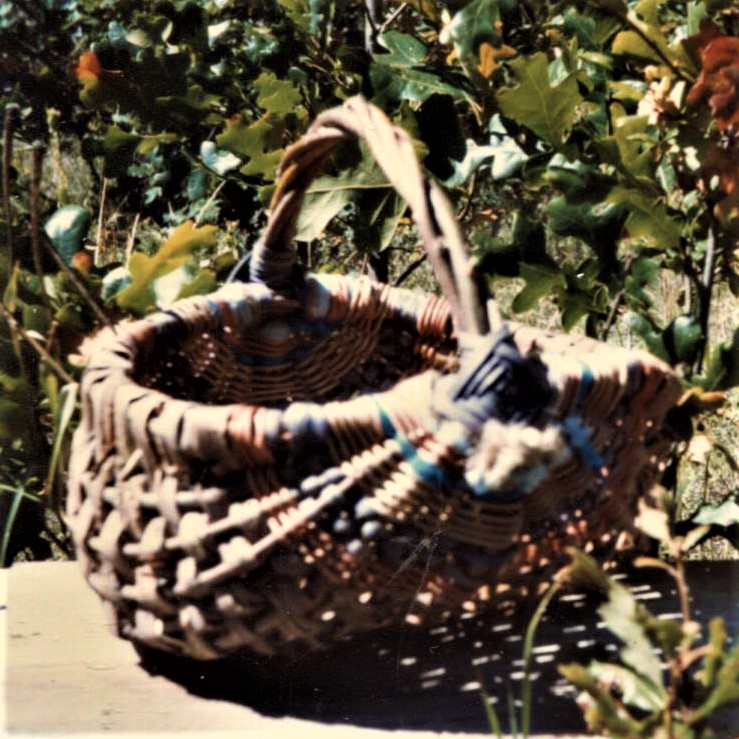

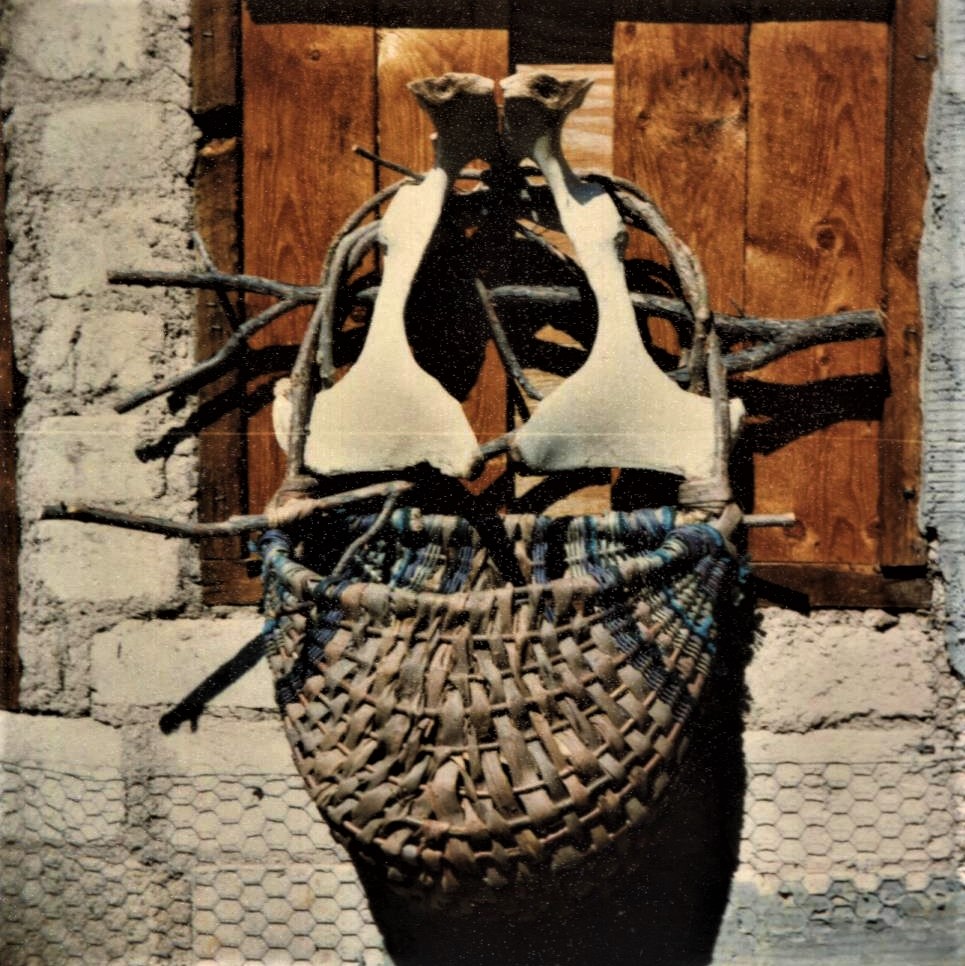
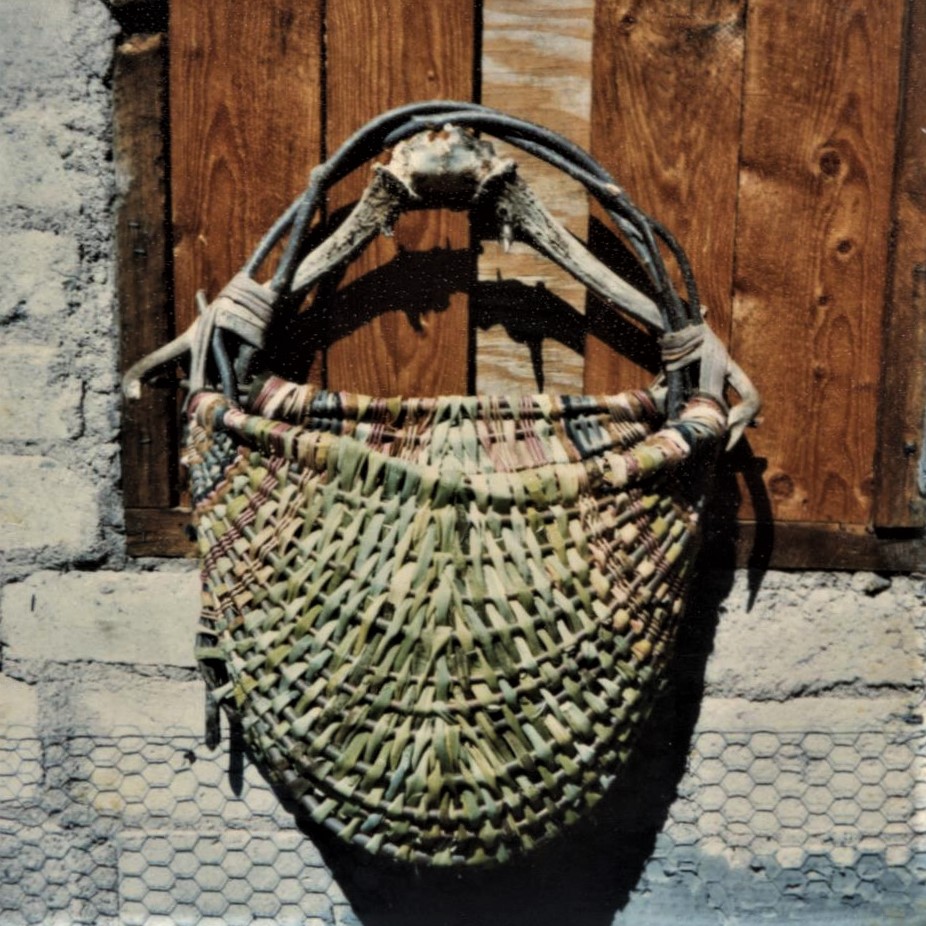

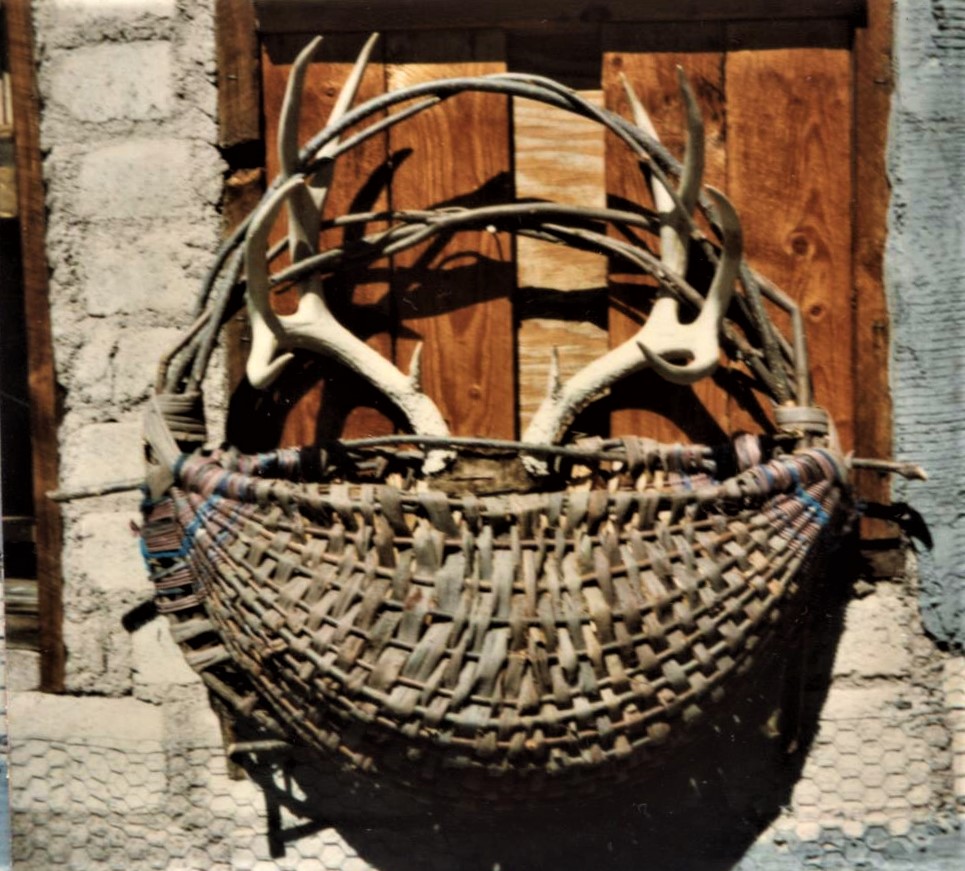
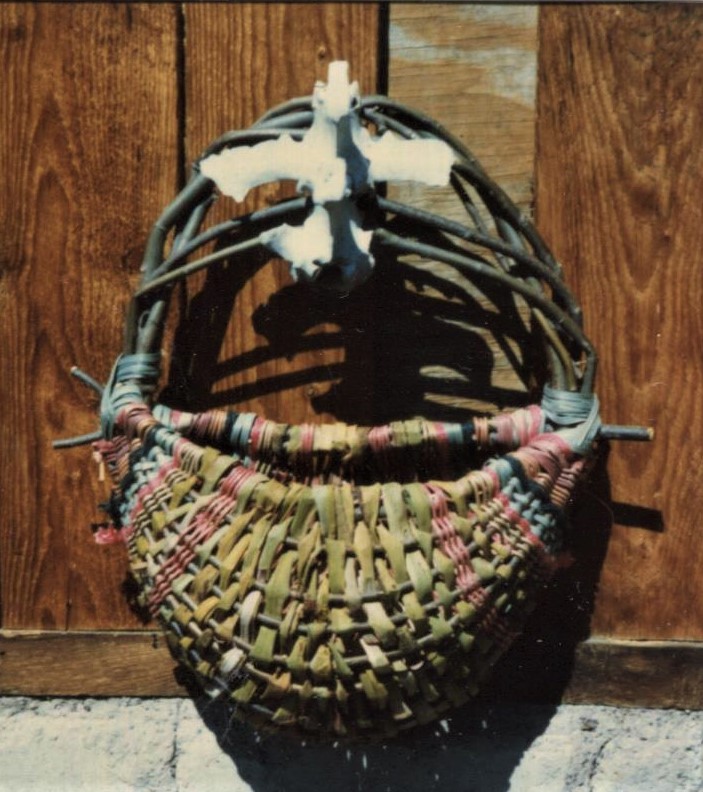
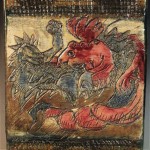
This gallery contains 7 photos.

Symbol constructed for the cover page of my poetic work, Mound Builders.